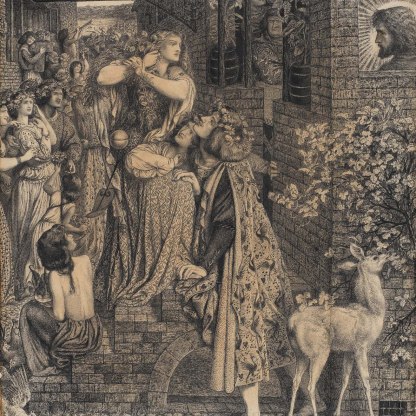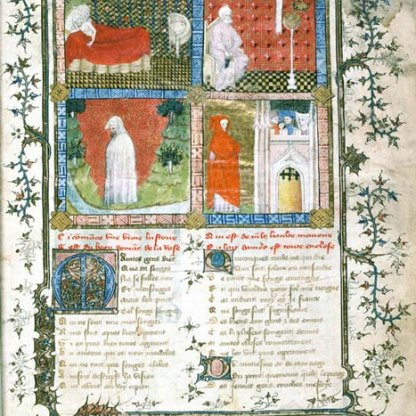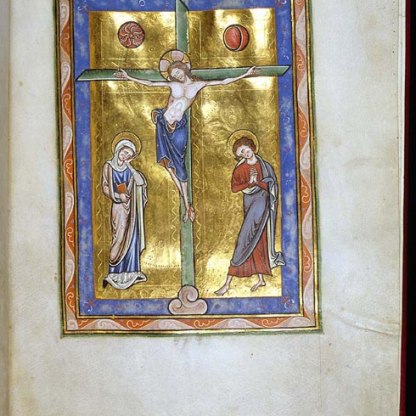Mary Magdalene at the Door of Simon the Pharisee
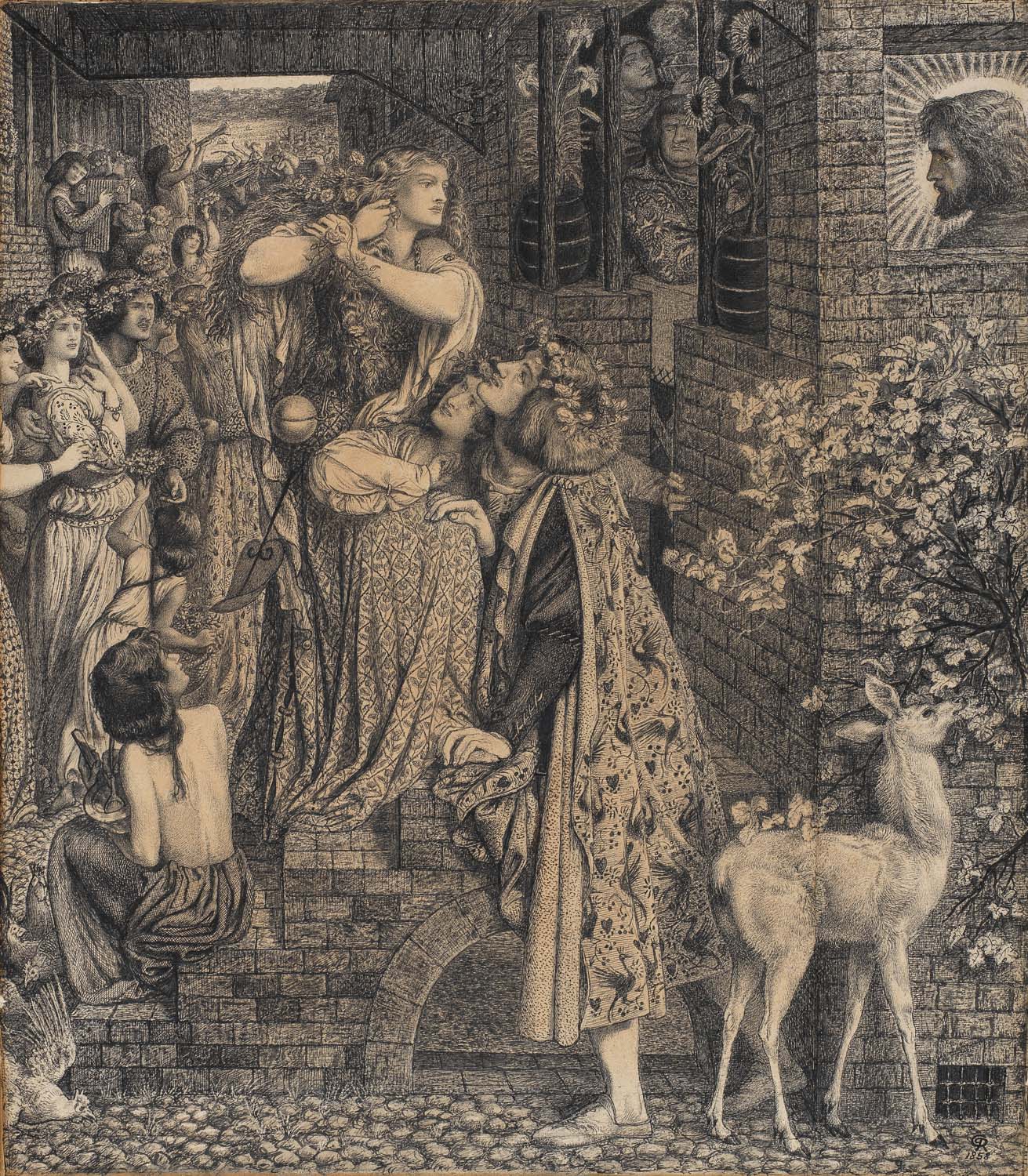
Oh loose me! Seest thou not my Bridegroom's face
That draws me to Him? For his feet my kiss,
My hair, my tears He craves today: – and oh!
What words can tell what other day and place
Shall see me clasp these blood-stained feet of His?
He needs me, calls me, loves me: let me go!
It was the custom of the poet and artist Dante Gabriel Rossetti to write literary accompaniments to his pictures. The words above come from a sonnet composed as a commentary upon this richly detailed ink drawing. They are spoken by Mary Magdalene, the reformed prostitute who became one of Christ's closest female followers. Here we see the moment of her conversion, viewed incredulously by a crowd of revellers as she pulls a garland of roses from her long, flowing hair. Behind her a procession approaches from the distance. Women dance, men play musical instruments, a couple kiss as they enter a doorway.
In the foreground three people stare up at Mary. On the left a beggar-girl holding a bowl watches the glamorous figure ascend the stairs, upon which a finely dressed young woman kneels, her hand pressed against the wall to block Mary's way. A young man stands immediately beneath her, dressed in a richly decorated cape, his head festooned with roses. He puts his hand upon Mary's foot and knee to further impede her progress. In a letter to a patron, Rossetti explained that this man is Mary's lover, her intended partner at the luxurious banquet in the house at the left of the drawing.
The Magdalene's attention, however, is entirely focused upon the other side of the picture. Within the doorway at the top of the stairs, a jowly, rather sour-looking man frowns out at her. This is the Pharisee Simon, who has invited Christ into his house for dinner and debate. Behind him stands a serving-girl, a steaming dish held aloft.
Entirely separated from the rest of the picture is the object of Mary's urgent ascent: Christ, whose radiant head is visible through a window, returning Mary's smitten gaze.
Christ's profile was based upon the features of Rossetti's fellow artist Edward Burne-Jones, who can also be seen in a 1869 [778] portrait in the Fitzwilliam by the artist and collector Charles Fairfax Murray. This suggests that Rossetti has given a rather flattering account of his friend.
The Pre-Raphaelite Brotherhood, a group of young British artists of which Rossetti was a leading member, often used friends and family as models in their paintings. As well as Burne-Jones, the face of the poet Algernon Charles Swinburne has been recognised in the young lover who tries to hold Mary back. There is another, more straightforward portrait of him by Rossetti in the Fitzwilliam [682].
Mary herself is based upon a great beauty of the day, the actress Ruth Herbert. Rossetti wrote giddily of her impending sitting in a letter to a friend:
I am in the stunning position this morning of expecting the actual visit at half past 11, of a model whom I have long been longing to paint for years – Miss Herbert of the Olympic Theatre – who has the most varied and highest expression I ever saw in a woman's face, besides abundant beauty, golden hair etc. Did you ever see her? O my eye! She has sat for me now and will sit to me for Mary Magdalene in the picture I am beginning. Such luck!
Rossetti remains famous for the beautiful women he painted and loved. He referred to them as his 'stunners', and in the 1860s, shortly after finishing this drawing, he began a series of oil paintings of his models in the guise of women from literature and mythology.
Themes and periods
Data from our collections database
T.E. Plint coll., for many years lost; rediscovered and bought by Charles Ricketts before 1890; Ricketts and Shannon Collection
Legal notes
The Ricketts and Shannon Collection. Bequeathed by Charles Shannon, 1937
Acquisition and important dates
- Method of acquisition: Bequeathed
- Dates: 1937
Dating
- Production date: AD 1858
Maker(s)
- Rossetti, Dante Gabriel Draughtsman
Materials used in production
Read more about this recordStories, Contexts and Themes
Other highlight objects you might like
Suggested Curating Cambridge products
Sign up to our emails
Be the first to hear about our news, exhibitions, events and more…

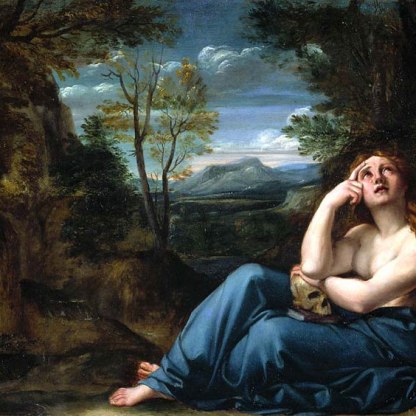
, 1868 Sir Ivor and Lady Batchelor Bequest through The Art Fund. Photo © The Fitzwilliam Museum, Cambridge..jpg?key=exhibition)
